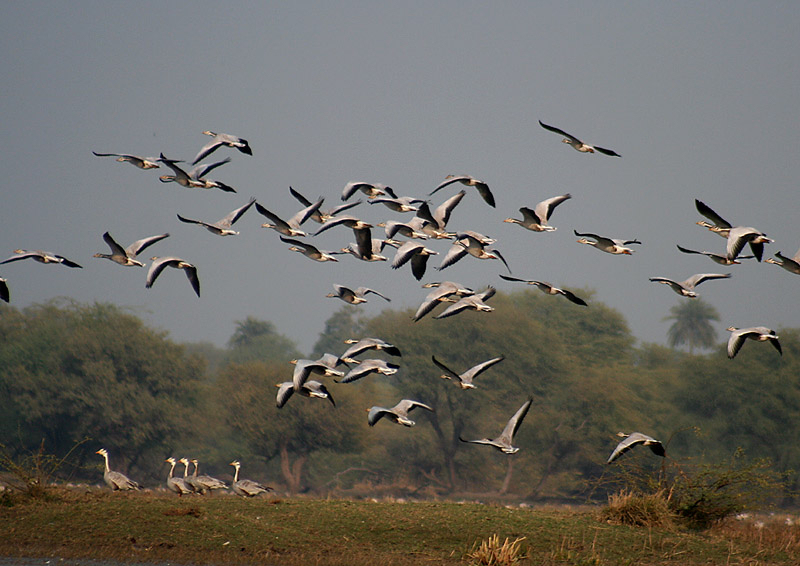Wings of Thought
What birds can teach us about awe and humility
I like birds. Although I’m not a twitcher despite the fact that I’ve wanted to be one for some time, I regularly read bird lovers’ blogs, and they often leave me awestruck.
Migratory birds, especially, feel like daily miracles. I know that’s an oxymoron, but it’s true nonetheless.
Take the Arctic tern. It’s not a large bird with the average of about 30–40 cm long, yet each year it makes a round trip between Antarctica and the Arctic, crossing multiple climate zones. Another favorite of mine is the bar-headed goose (See the top image). These birds fly over the Himalayas during migration, rising from sea level to 6,000 meters in just a few hours. They endure freezing temperatures and dangerously low oxygen in one of the most extreme altitude shifts any animal regularly experiences.
How do they do it? Of course, that’s a rhetorical question. Scientists can explain the mechanisms through physiology, aerodynamics, evolved traits, and so on. But the explanations don’t cancel out the wonder. If anything, they deepen it.
Closer to home, starlings offer another kind of marvel. They’re famous for forming huge flocks in the sky, called murmurations. These flocks move as if they were a single organism, fluid and synchronised. Some researchers explain murmurations through local rules: each starling responding to its nearest neighbours. Others, like Nobel Prize–winning physicist Giorgio Parisi, have drawn on ideas from complex systems, even analogies to quantum coherence, to make sense of how such coordination emerges at scale.
Watching this kind of intelligence unfold in the sky, it’s hard not to feel something stir. A reminder, maybe, of how far we humans have drifted from our embeddedness in the natural world. Our sense of self, our ego, gives us extraordinary freedom, but it can also sever us from the intuitive synchrony we once had with our surroundings. Sartre’s idea that “humans are condemned to be free” comes to mind. The gift and the burden of consciousness.
And here’s where my thoughts begin to shift.
I admire the logical clarity and rigour of Western philosophy. But as someone drawn to philosophical questions without formal academic training, I often find it difficult to feel fully at home in it. Especially in its more abstract modern forms, philosophy can feel clever to the point of self-containment: it often feels insular, disconnected, even self-serving. More troubling, it can seem disembodied, as if thought were something detached from the physical world that sustains it.
But thinking is not just a cerebral act. Rationality is a biological function. Watching birds reminds me of that. Their coordinated movement, their migratory instinct, their seamless interaction with the environment, all of which point to another kind of intelligence. These animals don’t use language, but they adapt with a fluidity and precision that’s hard to name. They’re not asking, “What is freedom?” or “What is good?” But instead, they’re simply being, beautifully.
I don’t think philosophy needs to abandon rigor, but I do think it has something to gain by reclaiming humility. After all, philosophy has its origin in awe and wonder. Philosophical insight doesn’t always need to begin with an argument. Sometimes, it arrives when we’re simply watching, listening and feeling.
(Image by J.M. Garg)
